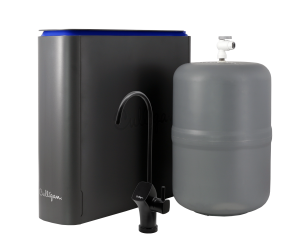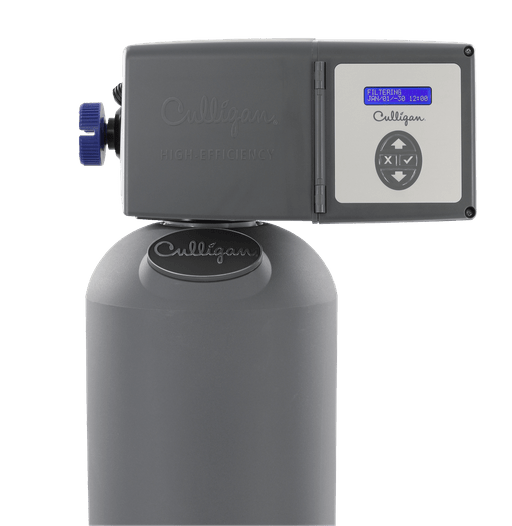Is San Diego’s Tap Water Safe to Drink? Investigating Lead Contamination
The presence of lead in the water supply is a significant concern for the residents of San Diego. Despite being a city known for its pristine beaches and vibrant lifestyle, San Diego faces a hidden threat in the form of lead-contaminated water. In the U.S., 14-20% of lead exposure is attributed to drinking water. Municipalities have taken action over the past 30 years to ban lead solder, reduce corrosivity and remove lead from brass faucets and water meters, and these measures have significantly helped exposure issues.
Lead contamination in San Diego’s water can be attributed to various sources. Aging infrastructure, such as lead pipes and plumbing fixtures, is a primary contributor. As these pipes corrode over time, lead particles can leach into the water supply. Additionally, construction activities, industrial pollution, and even natural erosion can introduce lead into the water system. The combination of these sources poses a significant challenge in ensuring the safety of the city’s water supply.
Exposure to lead-contaminated water can have severe health consequences, particularly for vulnerable populations such as children and pregnant women. Lead is a neurotoxin that can impair brain development, leading to learning disabilities, behavioral problems, and reduced IQ levels. It can also cause damage to the kidneys, liver, and other organs. Even low levels of lead exposure over an extended period can have detrimental effects on human health. Therefore, the presence of lead in San Diego’s water poses a serious threat to the well-being of its residents.
The presence of lead in San Diego’s water is a pressing issue that demands attention and action. The sources of lead contamination, including aging infrastructure and various external factors, need to be addressed to ensure the safety of the water supply. The potential health risks associated with lead exposure, especially for vulnerable populations, cannot be ignored. By implementing immediate measures such as infrastructure upgrades, regular testing, and public awareness campaigns, San Diego can take significant steps towards eliminating lead from its water and safeguarding the health of its residents.
How Can Lead Exposure Lead To Health Concerns?
In addition to its once widespread use, and continued use in some plumbing fittings and solder, lead is virtually undetectable in water. Since you can’t see, taste, or smell it, prolonged exposure can be common. Lead exposure is particularly harmful to pregnant women as it can cross the placental barrier and harm the developing fetus. It can lead to premature birth, low birth weight, and developmental delays in infants.
Lead contamination in water is a serious health concern that affects the residents of San Diego. Lead is a toxic metal that can enter the water supply through corroded pipes, plumbing fixtures, or solder used in plumbing systems. When consumed, lead can accumulate in the body and cause various health problems.
One of the major health concerns associated with lead exposure is its impact on the nervous system. Lead can impair brain development in children, leading to learning disabilities, decreased IQ, and behavioral problems. It can also affect adults, causing memory loss, mood disorders, and reduced cognitive function. Furthermore, lead exposure can damage the kidneys, liver, and cardiovascular system. It can increase blood pressure, leading to hypertension and an increased risk of heart disease.
To mitigate these health concerns, it is crucial for San Diego to address the issue of lead contamination in the water supply. Regular testing of water sources, replacing old lead pipes, and implementing water treatment methods are essential steps to ensure the safety and well-being of the residents. Public awareness campaigns and education about the risks of lead exposure are also necessary to empower individuals to take necessary precautions and protect their health.
For children, the effects of consuming lead-contaminated water are especially high. Once consumed, lead remains in our bodies or ‘bioaccumulates’, as we can’t flush the contaminant from our system. Once there, lead can cause serious behavioral and cognitive problems for children, and over time it can lead to:
- Low IQ
- Hyperactivity
- Slowed, delayed, and stunted growth
- Problems hearing
- Anemia
- Seizures, coma, and possibly even death in severe situations
Lead also crosses the placenta, so it’s especially important for pregnant women to avoid drinking water contaminated with lead. In addition to harming the mother, it can cause stunted fetal growth and premature birth.
For the average adult, lead exposure from water can cause heart and cardiovascular issues, reduce kidney function, and contribute to reproductive problems.
The degree and severity of these issues depends on how much lead you’ve been exposed to, and how much is stored in your body, though governing health authorities like the Centers for Disease Control (CDC) caution that no amount of lead is safe.

Navigating Lead Concerns in San Diego
Lead contamination remains a pressing issue in San Diego, stemming from its presence in aging residences, pipelines, and soil. While the city has enacted stringent regulations to counter this problem, including measures to address lead-based paint and access to testing and solutions, residents must remain vigilant about potential sources of lead exposure, particularly if residing in older homes or areas with industrial activities. This overview delves into the current state of lead contamination, the repercussions of lead exposure on health, avenues for testing homes, actions to take upon discovery of lead, and proactive strategies to prevent lead exposure in the San Diego community.
1. What is the current status of lead contamination in San Diego?
Lead contamination in San Diego has been a concern due to its presence in older homes, pipes, and soil. The city has taken measures to address this issue, including implementing strict regulations on lead-based paint and providing resources for lead testing and remediation. However, it is important for residents to be aware of potential lead sources and take necessary precautions, especially if living in older homes or areas with industrial activities.
2. How does lead exposure affect human health?
Lead exposure can have severe health effects, particularly in children. It can lead to developmental delays, learning difficulties, and behavioral problems. In adults, lead exposure can cause high blood pressure, kidney damage, and reproductive issues. It is crucial to minimize exposure to lead, especially for vulnerable populations such as pregnant women and young children.
3. How can I test my home for lead in San Diego?
Contact your local San Diego Culligan water experts! They will arrive at your home at a time of your convenience to give your water a FREE test for lead and other contaminants. Schedule a free water test today!
4. What should I do if I find lead in my home?
Your local Culligan experts will be able to provide you with personalized recommendations for which water filtration system will best serve your household.
5. How can I prevent lead exposure in San Diego?
To prevent lead exposure, it is essential to take proactive measures. Regularly clean floors, windowsills, and other surfaces to reduce dust accumulation, as lead dust is a common source of exposure. Ensure that your drinking water is lead-free by using a certified water filter or contacting your local water utility for information on lead levels. Additionally, if you live in an older home, consider having your soil tested and take steps to minimize contact with potentially contaminated soil.
Lead contamination in San Diego remains a concern, particularly in older homes, pipes, and soil. The city has implemented regulations and provided resources for lead testing and remediation, but it is crucial for residents to be aware of potential lead sources and take necessary precautions. To prevent lead exposure, regular cleaning, using certified water filters, and minimizing contact with potentially contaminated soil are essential steps to take. Take action to ensure your drinking water is safe, schedule a free water test today!
How Lead Enters Drinking Water Systems
The most common way lead can enter a drinking water system is through corrosive aging pipes and plumbing infrastructure. Many homes, and sometimes entire communities, have plumbing infrastructure that has not been updated for decades, and sometimes more than a century.
These homes are at high risk for lead contamination, even if the water coming through it has been properly treated.
When pipes, fitting or solder have become corroded, water can become contaminated.
Proactive Prevention: The Best Deterrent
The best way to avoid a lead problem is to never have one. Despite the ongoing issues in many cities throughout America, many homeowners are simply not keen in getting a simple water test.
A test can determine whether your household has tap water, and whether this exposure can be avoided in the interim by flushing it for a specified amount of time. Knowing this can be the difference between your family becoming exposed to lead in tap water.
Synopsis of Flint Crisis

The Flint Crisis was a situation where the water was improperly treated – specifically, a severe act of negligence on the part of public officials failing to add corrosion inhibitors to the water. Given the heightened sense of awareness and knowledge of the issue, another such problem is likely not in the realm of possibility.
However, that doesn’t mean all water in your home is safe. Even treated water can leach lead into its supply if your pipes or fixtures are made of lead.
The final tally on the Flint Water Crisis, which included e.coli bacteria, THMs, lead, and a Legionnaire’s disease outbreak, resulted in 6,000 to 12,000 children exposed to lead and a slew of lawsuits, investigations, resignations and criminal indictments.
Solutions
Suggested Products

The Aquasential® Smart Reverse Osmosis Water Filter (RO)
- 7 stages of filtration and 12 filter options
- Certified for reduction of 58 contaminants
- 2-in-1 sediment and carbon filter screens out sediment and particles
- Can alert you and your dealer when service or filter replacements are needed

Aquasential™ Smart High Efficiency Whole House Water Filters
Reduce sediments in your water and contaminants that cause your water to appear, taste, and smell unpleasant. Your system can also lessen the taste and odor of chlorine, and prevent pipe damage and staining from low pH water. Additional customizations include:
- Culligan® Filtr-Cleer® Water Filters – Reduces Sediment Problems
- Culligan® Cullar® Water Filters – Reduces Taste and Odor Problems
- Culligan® Cullneu Water Filters – Reduces Acid Problems

Facebook